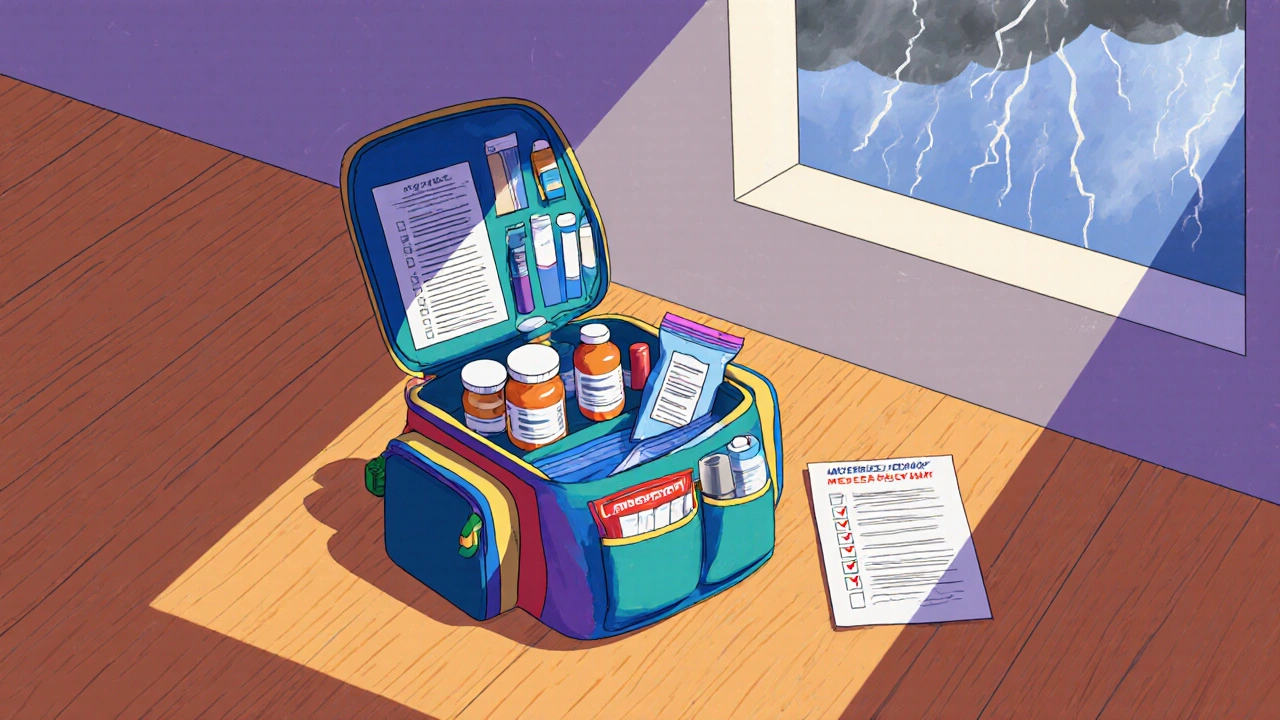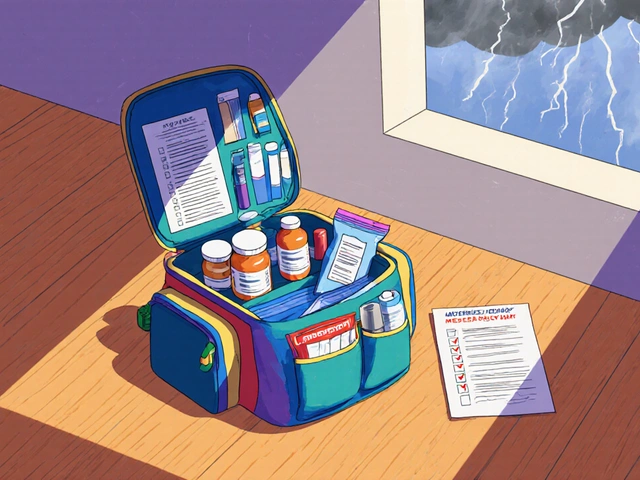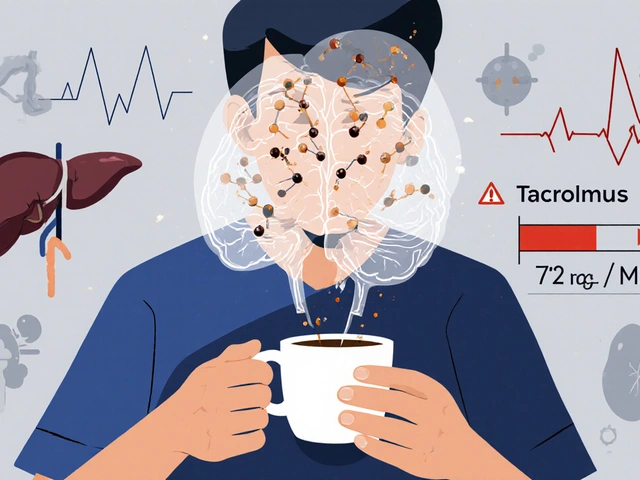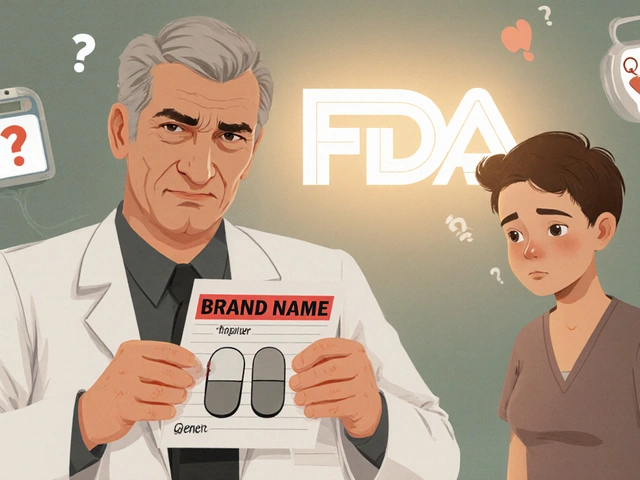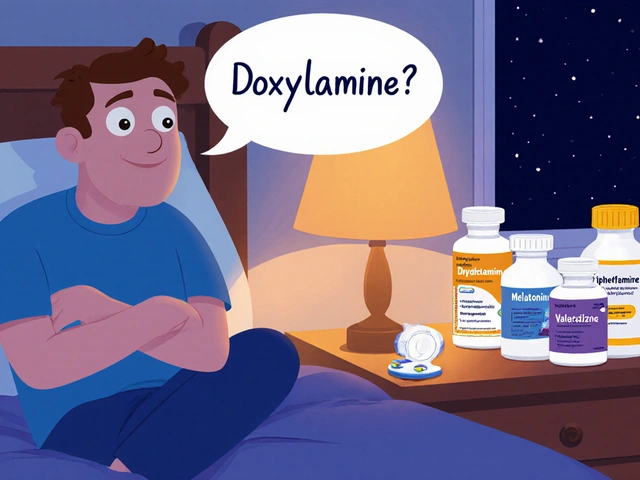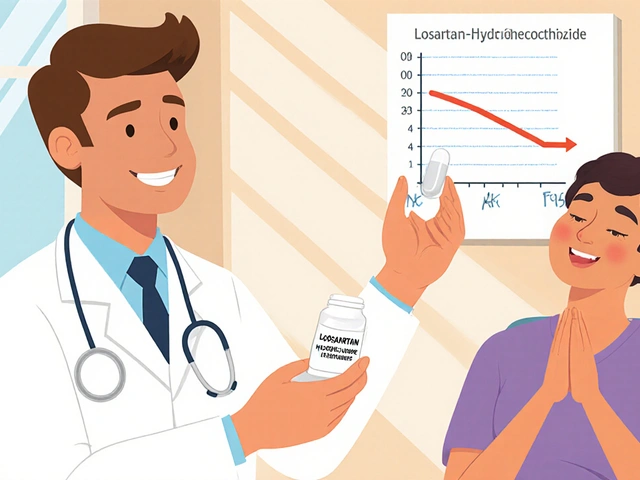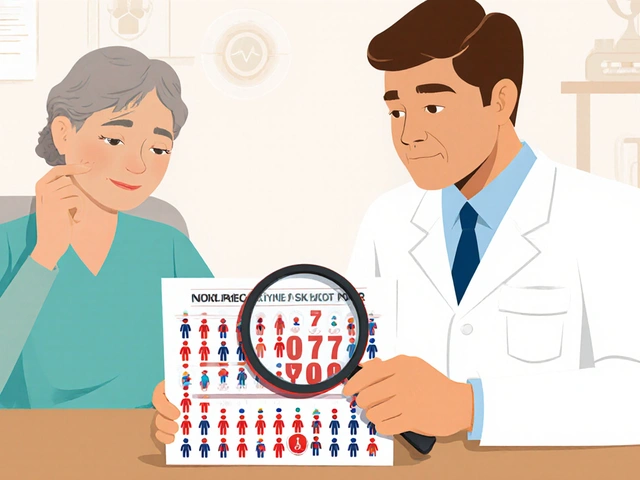When disaster strikes-whether it’s a flood, wildfire, or sudden power outage-your first thought isn’t usually about your pills. But if you’re taking medication for high blood pressure, diabetes, asthma, or any chronic condition, forgetting your meds could be life-threatening. Emergency responders can’t always reach you in time. Pharmacies might be closed. Power outages can ruin insulin or other temperature-sensitive drugs. The solution isn’t complicated: medication safety in emergencies starts with a simple, well-packed go-bag.
Why Your Go-Bag Needs More Than Water and Flashlights
Most people know to grab bottled water, non-perishable food, and a flashlight when evacuating. But according to the CDC, 89% of Americans over 65 take at least one prescription medication. And nearly 157 million people in the U.S. have chronic conditions requiring daily drugs. If you’re one of them, your go-bag isn’t complete without your meds. FEMA’s 2022 After-Action Report on Hurricane Ida found that 23% of evacuees ran out of medication during the emergency. The most common shortages? Cardiovascular drugs (31%), respiratory inhalers (22%), and diabetes treatments (18%). These aren’t just inconveniences-they’re emergencies. A missed dose of blood pressure medication can lead to stroke. Skipping insulin can trigger diabetic ketoacidosis. Running out of an inhaler can send someone to the ER-or worse.What to Pack: The 7-Day Minimum (But Go Further)
The American Red Cross recommends a 7-day supply of all essential medications. That’s the baseline. But if you live in an area prone to prolonged disasters-like earthquakes in California or hurricanes along the Gulf Coast-aim for two weeks. Alert San Diego and the CDC both advise this extended supply. Why? Because recovery can take days or even weeks. One Reddit user, MedPrepRN, shared after Hurricane Ian: “I had 7 days of meds. Couldn’t get back to my house for 11 days. Wish I’d gone further.” Here’s what to include:- Every prescription medication you take daily-no exceptions
- Over-the-counter drugs you rely on: pain relievers, antacids, allergy meds
- Emergency meds: epinephrine auto-injectors, nitroglycerin, rescue inhalers
- Supplements you take regularly: iron, vitamin D, thyroid hormones
Special Cases: Insulin, Biologics, and Refrigerated Drugs
If you use insulin, injectables, or other temperature-sensitive drugs, your go-bag needs special attention. Heat and cold can destroy potency. During the California wildfires, multiple patients ended up in emergency rooms because their insulin spoiled in a hot car or unrefrigerated bag. The solution? Use a cooling device. The Frio Wallet, tested by Consumer Reports in March 2023, keeps medications below 86°F for up to 48 hours without ice or electricity. It’s lightweight, reusable, and fits easily in a go-bag. For longer trips, consider the MedAngel ONE-a small sensor that connects to your phone and alerts you if the temperature inside your bag goes outside safe limits. It’s FDA-cleared and designed for exactly this scenario. If you’re on biologics (like those for rheumatoid arthritis or Crohn’s), talk to your pharmacist. Some require freezing. In emergencies, you might need to carry them in a cooler with reusable gel packs. Know your options before disaster hits.Documentation: The Most Overlooked Part
A list of your meds isn’t enough. You need a clear, printed medical summary. Westchester County Emergency Services recommends including:- Full name and date of birth
- Primary care doctor’s name and phone number
- List of all medications: name, dose, frequency, reason for taking
- Drug allergies and past reactions
- Any advance directives or living wills
- Insurance card and emergency contacts

How to Keep Your Go-Bag Fresh and Ready
A go-bag isn’t a “set it and forget it” item. Medications expire. Pills degrade. Labels fade. You need a system. Consumer Reports suggests three simple habits:- Ask your doctor for 60- or 90-day refills instead of 30-day ones. This lets you stockpile without running out.
- Fill prescriptions on the first day you’re eligible. Don’t wait until you’re down to your last pill.
- Check your go-bag every six months. Replace expired meds. Update your list if you’ve started or stopped a drug.
What You Shouldn’t Do
Avoid these common mistakes:- Don’t rely on pharmacies to refill during a disaster. Many will be closed or overwhelmed.
- Don’t transfer pills to daily pill organizers without keeping the original bottles. You’ll lose critical info.
- Don’t assume your doctor will know your meds if you’re rushed to the ER. Bring your list.
- Don’t forget backup supplies: syringes, glucose strips, alcohol wipes, or a nebulizer if you need them.
Legal and Practical Support: Know Your Rights
In 42 U.S. states, pharmacists can give you an emergency supply of your medication without a new prescription during a declared disaster. This is thanks to FDA guidance from 2020 and state-level emergency powers. But you still need to ask. Don’t assume they’ll offer it. If you’re traveling or living abroad, the U.S. Department of State advises carrying a doctor’s letter explaining your condition and medications. Some countries restrict certain drugs. A letter can prevent confiscation at borders.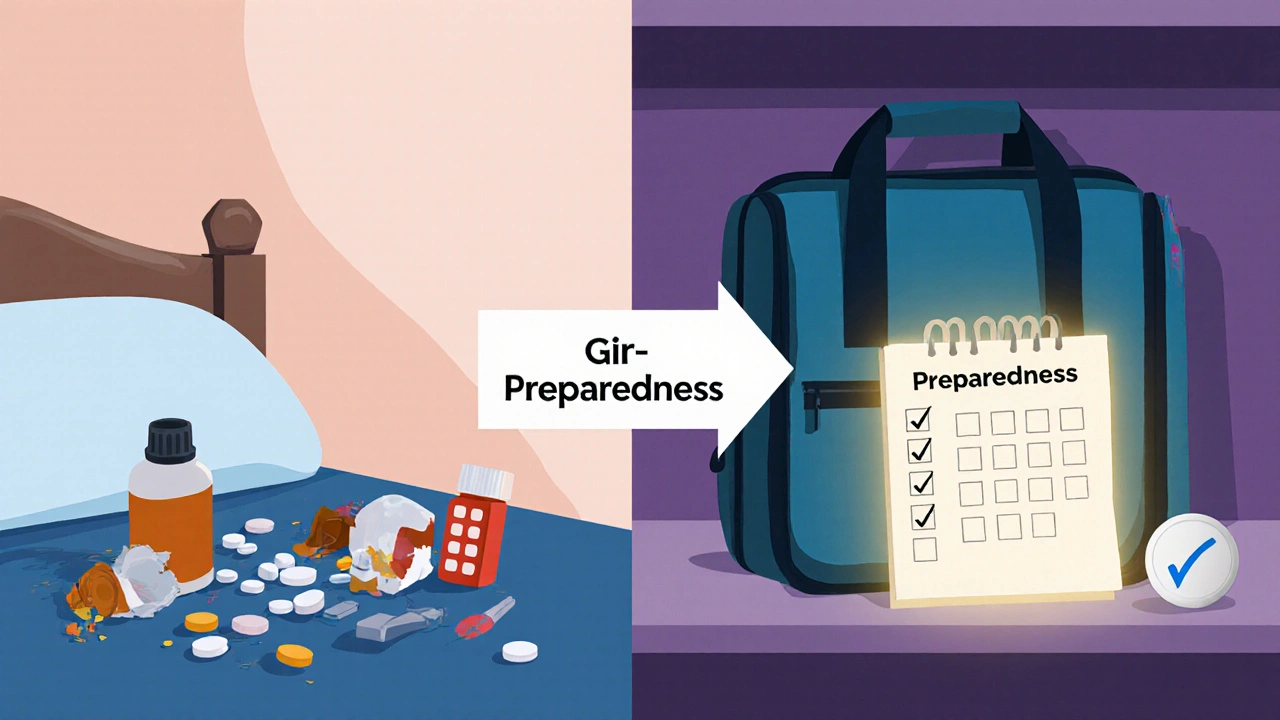
Who Needs This Most-and Who’s Falling Through the Cracks
The CDC’s 2022 survey shows that 34% of people over 65 have a medication go-bag. Only 18% of adults under 35 do. That’s dangerous. Younger people have chronic conditions too-type 1 diabetes, epilepsy, autoimmune diseases, mental health meds. Just because you’re young doesn’t mean you’re immune to emergencies. If you’re a caregiver for someone with complex needs-children, elderly parents, disabled family members-your go-bag is even more critical. Their lives depend on consistency.Final Check: Your Go-Bag Survival List
Before you close your bag, run through this quick checklist:- ☐ 14-day supply of all prescription meds (in original bottles)
- ☐ 7-day supply of OTC meds you use daily
- ☐ Emergency meds (epinephrine, inhaler, nitroglycerin)
- ☐ Cooling device for insulin or temperature-sensitive drugs
- ☐ Waterproof medical summary (name, meds, allergies, doctor, contacts)
- ☐ Insurance card and ID
- ☐ Cash in small bills (ATMs may be down)
- ☐ Battery-powered flashlight and extra batteries
- ☐ Water (at least 1 gallon per person per day)
- ☐ First aid kit with bandages and antiseptic
What’s Next?
The future of emergency medication safety is getting smarter. The CDC is rolling out condition-specific go-bag templates for diabetes and heart disease in early 2024. Pharmacists are being trained to proactively ask patients about emergency plans. And new tech like the MedAngel ONE makes it easier than ever to monitor drug safety. But none of that matters if you don’t act today. Start small. Pick one medication. Add it to a bag. Check its expiration date. Write down the dosage. Do it again next week. In a few weeks, you’ll have a complete, reliable go-bag-and peace of mind that matters more than you realize.Can I just keep my meds in my car or bedside table?
No. Your car gets too hot or too cold. A bedside table might be blocked by debris during a disaster. Your go-bag needs to be portable, protected, and easy to grab in under 30 seconds. Store it in a consistent, accessible spot-like a closet shelf you pass every day.
What if I can’t afford a 14-day supply?
Talk to your pharmacist. Many offer free or low-cost emergency refills. Some pharmacies have patient assistance programs. Ask about 90-day prescriptions-they often cost the same as 30-day ones and give you extra pills to stockpile. Community health centers may also help with medication access during crises.
Do I need a go-bag if I live in an apartment?
Yes-especially if you live in an apartment. Evacuation orders can come quickly. Elevators may fail. Stairs may be the only way out. A go-bag lets you leave immediately without waiting for help. It’s not about where you live-it’s about being ready when seconds count.
Should I include my pet’s medications?
Absolutely. Pets on heart medication, insulin, or seizure drugs need their own supply. Include their meds in your go-bag, along with food, bowls, and a carrier. Many shelters now accept pets-but only if you bring their medical records and meds.
How often should I replace my go-bag supplies?
Check every six months. Replace anything expired. Update your list if you’ve changed medications. Set a calendar reminder for the first day of January and July. Make it a habit-like changing your smoke detector batteries.
